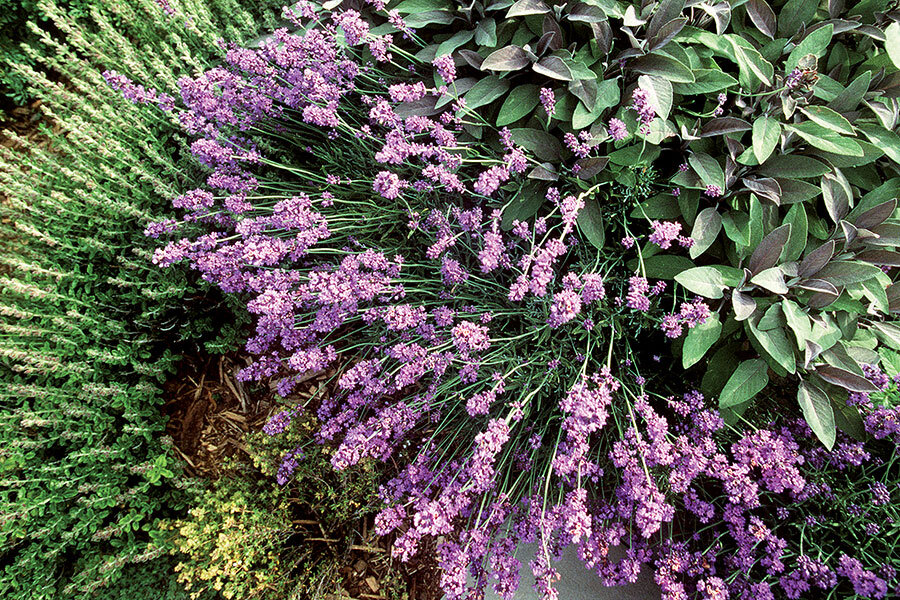The memorable scent of lavender
Loading...
Rosemary may be known as the herb of remembrance, but it is the unmistakable perfume of lavender that transports me to days gone by: a stroll through an English garden, my dad’s aftershave, a sleep pillow handcrafted by a neighbor.
Its fragrance alone makes lavender worth growing, but it is also a wonderful companion plant. It’s perfect for edging and low hedges, and creates colorful accents in the garden as well as in containers.
And, of course, it makes a powerfully fragrant combo when planted alongside roses.
Lavender is native to the Mediterranean and has been used to perfume, cleanse, and heal for 2,500 years. Ancient Egyptians wrapped their dead in shrouds dipped in lavender. The Greeks used it medicinally. Romans used the herb extensively in bathwater.
Elizabethans scattered lavender on floors to perfume the house, deter insects in the linen closet, and mask displeasing odors. Colonists brought lavender to America from England.
A number of species are cultivated worldwide, but our best performers are English, Spanish, French, and the lavandins (a class of lavender hybrids).
Not all lavenders will succeed everywhere in the country. Munstead, Hidcote, and Croxton’s Wild (hardy to Zone 4b) are the best ones for overwintering in most of temperate America.
While English lavender (L. angustifolia) is winter-hardy to Zone 5 and comfortable in hot, arid areas of the West, it generally will not tolerate the steaming summers of the Deep South.
French and Spanish varieties don’t mind humidity, but may need to be treated as annuals north of Zone 9. Provence and Sweet have done consistently well in Southern gardens.
No matter where you live, all lavenders require full sun, an airy location, and slightly alkaline soil. Superior drainage is a must, in order to avoid root rot. Adding rotted manure and small stones to clay and sandy soils will improve drainage problems.
Lavenders may require a little extra water during their first season, but they don’t need fertilizer. Some experts recommend sprinkling a bit of potash around the base of each bush in the spring to heighten flower quality and color.
Established bushes need to be trimmed back by at least one-third in the spring (after new growth has appeared) to keep plants from getting lanky and woody. Deadheading lavenders after they bloom may encourage the plant to flower again. Tidy up unruly branches and cut out any dead wood over the growing season.
Stop pruning by Oct. 1 to give plants a chance to harden off before winter.
Harvest flower stems just as they begin to open. Pick the dark-flowered lavenders when just one or two flowers are open. Choose a warm, dry day and prune late in the morning – damp flower stalks can encourage mold. Hang small bunches of cuttings held with rubber bands upside down to dry in a dark, well-ventilated room. Sunlight will fade the flowers.
Once the heads have dried, you can enjoy your harvest in many ways: Add a pinch of lavender flowers to freshly baked breads, mix the flowers in potpourris, or create your own unique sachets. Then, breathe deeply to recapture some cherished summer memories.







